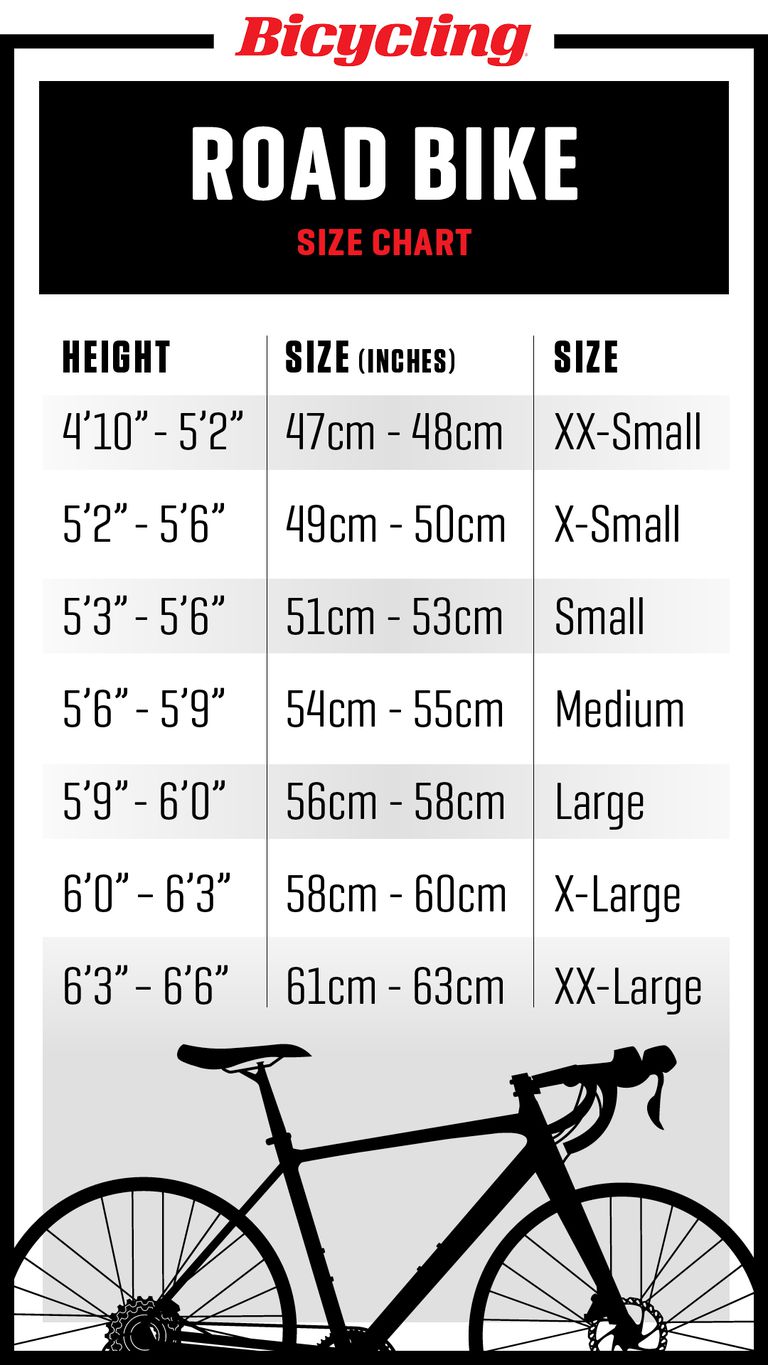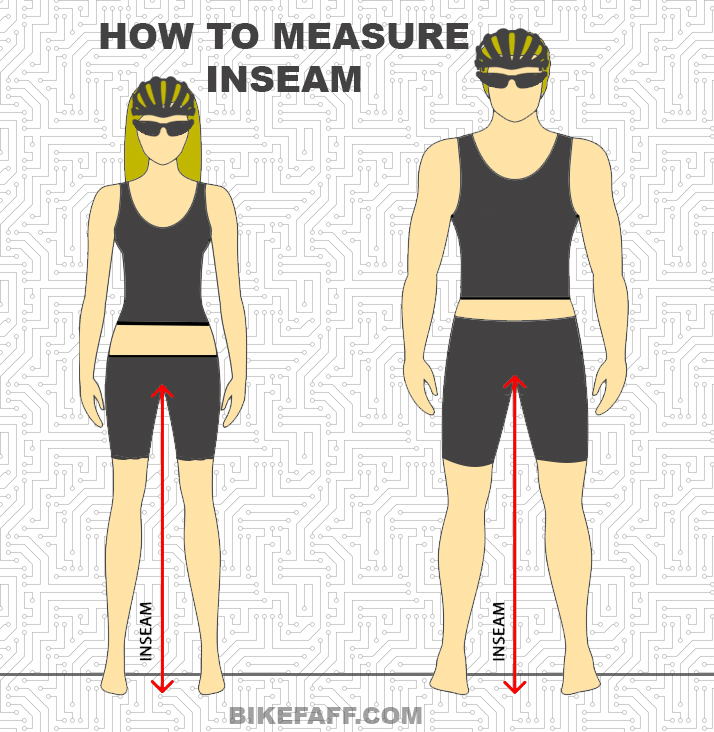Understanding the Importance of Bike Size
Choosing the right bike size is crucial for ensuring a comfortable, efficient, and safe cycling experience. A properly sized bike can significantly enhance the overall enjoyment of your rides, while an ill-fitting bike may lead to discomfort, inefficiency, and even injuries. Factors such as saddle height, handlebar reach, and frame size all contribute to the bike’s fit and should be carefully considered when selecting a bike.
To determine what size bike is best for you, consider the primary question: what size bike for me? This question is essential for both novice and experienced cyclists, as body proportions and riding styles can change over time. By understanding the importance of bike size and investing time in selecting the right bike, you can unlock the full potential of your cycling adventures.
Relevance of Body Measurements in Bike Selection
Selecting the right bike size is not only about choosing the correct frame size but also about considering various body measurements that influence the rider’s position, balance, and control. Key body measurements to consider when determining what size bike for me include height, inseam, and arm length. These factors play a significant role in ensuring a comfortable and efficient bike fit.
Height is an essential factor in determining the appropriate bike size, as it affects the rider’s overall reach and standover clearance. Inseam length, which measures the distance from the groin to the ankle, is crucial for determining saddle height and ensuring proper leg extension. Arm length, on the other hand, influences handlebar reach and the rider’s ability to maintain a comfortable upper body position.
By taking these body measurements into account, cyclists can make more informed decisions when selecting a bike. A properly sized bike that accommodates the rider’s unique body proportions can lead to improved comfort, increased efficiency, and reduced risk of injury.
Bike Types and Their Size Considerations
Different bike types have unique size requirements and considerations that can impact bike fit and riding style. Understanding these differences is essential when determining what size bike for me. Common bike types include road bikes, mountain bikes, hybrid bikes, and children’s bikes, each with their own set of sizing factors.
Road bikes prioritize speed and efficiency, often featuring a more aggressive riding position. As a result, road bike sizing typically focuses on frame size, top tube length, and stack and reach measurements. Proper fit is crucial for maximizing power transfer, reducing aerodynamic drag, and minimizing strain on the rider’s back and neck.
Mountain bikes, on the other hand, emphasize stability, control, and maneuverability. Mountain bike sizing considerations include frame size, wheel size, suspension travel, and handlebar width. A well-fitted mountain bike should provide a balanced and comfortable riding position, allowing the rider to navigate technical terrain with confidence.
Hybrid bikes offer a blend of road and mountain bike features, making them suitable for various terrains and riding styles. Hybrid bike sizing should consider frame size, wheel size, and handlebar height. Proper fit is essential for ensuring a comfortable riding position and efficient power transfer.
Children’s bikes require special attention, as they must accommodate a growing rider. Children’s bike sizing should focus on frame size, standover height, and wheel size. A properly sized children’s bike should allow for easy maneuverability, control, and safe operation.
By understanding the unique size considerations for each bike type, cyclists can make more informed decisions when selecting a bike that meets their needs and preferences.
How to Measure Your Body for a Bike
To determine what size bike for me, it’s essential to measure specific body dimensions accurately. These measurements include height, inseam, and arm length. By following a step-by-step guide and using a measuring tape, cyclists can ensure a more precise bike fit, enhancing comfort, efficiency, and safety.
- Height: Stand with your back against a wall and measure from the ground to the top of your head using a measuring tape. Maintain proper posture, keeping your heels, buttocks, and shoulders in contact with the wall.
- Inseam: Stand with your back against a wall and place a hardcover book or a measuring tape between your legs, simulating the saddle height. Measure from the ground to the top edge of the book or tape. Ensure your feet are flat on the floor and your legs are slightly apart.
- Arm length: Measure from the acromion process (the bony point at the top of your shoulder) to the tip of your middle finger. Keep your arm slightly bent and maintain a relaxed posture during the measurement.
For optimal accuracy, consider seeking assistance from a friend or a professional. These body measurements will help you interpret bike size charts and determine the ideal frame size and components for your bike.
Bike Size Charts and Frame Geometry
Bike size charts and frame geometry are essential tools for determining what size bike for me. These resources help cyclists understand the relationship between body measurements and bike dimensions, ensuring a comfortable and efficient bike fit. Interpreting bike size charts and frame geometry concepts requires some knowledge of industry standards and terminology.
Bike size charts typically list frame sizes alongside corresponding body measurements, such as height and inseam. These charts provide a general guideline for selecting the appropriate frame size based on the rider’s body dimensions. However, it’s essential to consider that different bike manufacturers may have slightly different size charts and sizing conventions.
Frame geometry refers to the dimensions and angles of the bike’s frame, which significantly impact bike fit and riding style. Key frame geometry measurements include:
- Stack: The vertical distance from the center of the bottom bracket to the top of the head tube.
- Reach: The horizontal distance from the center of the bottom bracket to the top of the head tube.
- Top tube length: The horizontal distance between the head tube and the seat tube.
- Head tube angle: The angle at which the head tube meets the fork steerer tube.
- Seat tube angle: The angle at which the seat tube meets the bottom bracket.
Understanding these frame geometry concepts can help cyclists determine the ideal bike size and make necessary adjustments to optimize bike fit and riding style. By interpreting bike size charts and frame geometry, cyclists can ensure a more personalized and enjoyable riding experience.
Fitting a Bike: Adjusting Seat Height, Saddle Position, and Handlebars
Once you have determined the appropriate bike size using bike size charts and frame geometry, you can optimize bike fit and rider comfort through key adjustments. These adjustments include seat height, saddle position, and handlebars. Properly fitting these components can significantly enhance the overall cycling experience, ensuring comfort, efficiency, and injury prevention.
Seat height
To adjust seat height, stand next to your bike and set the saddle at hip level. While straddling the bike, your leg should have a slight bend at the knee. This setup allows for optimal power transfer and reduces strain on the knees. Fine-tune the seat height by test riding the bike and making minor adjustments as needed.
Saddle position
Saddle position, or fore/aft adjustment, affects the rider’s balance and pedaling efficiency. To set the saddle position, position the saddle so that the knee is directly over the pedal spindle when the crank arm is at the three o’clock position. This alignment ensures a neutral and balanced riding position, reducing strain on the back and knees.
Handlebars
Handlebar adjustments involve height, reach, and angle. Ideally, the handlebars should be at a height that allows for a comfortable and upright riding position. Reach refers to the distance from the saddle to the handlebars, which should be adjusted to maintain a neutral wrist position. Lastly, handlebar angle can influence the rider’s comfort and control; adjust the angle to find a position that feels natural and promotes stability.
Test riding and fine-tuning the bike setup is crucial for ensuring a perfect bike fit. By making these key adjustments, cyclists can optimize bike fit and rider comfort, ultimately enhancing the overall cycling experience.
Seeking Professional Assistance: Bike Fitting Services
While determining what size bike for me through personal measurements and bike size charts is a crucial first step, professional bike fitting services can provide additional value and ensure a perfect bike fit. These services involve a comprehensive assessment of the rider’s body measurements, riding style, and preferences, resulting in a tailored bike setup that optimizes comfort, efficiency, and injury prevention.
Process
During a bike fitting session, a professional fitter will typically follow a structured process that includes an interview, physical assessment, and dynamic fit analysis. The interview phase involves discussing the rider’s cycling goals, preferences, and any existing discomfort or injuries. The physical assessment includes measuring various body dimensions, such as height, inseam, and arm length, while the dynamic fit analysis involves observing the rider on the bike and making adjustments in real-time.
Costs and Drawbacks
Bike fitting services can vary in cost, depending on the fitter’s expertise, the technology used, and the level of customization provided. While these services can be an investment, they often result in improved comfort, performance, and injury prevention, making them a worthwhile consideration for serious cyclists. One potential drawback is that not all bike shops or fitters use the same methods or technology, which may lead to inconsistencies in the fitting process. It’s essential to research and choose a reputable bike fitter with a proven track record and positive reviews.
By seeking professional bike fitting services, cyclists can benefit from a personalized and comprehensive approach to bike fitting, ensuring a perfect bike fit that enhances the overall cycling experience.


.jpg)



